 |
|
|
| (Information by Peter Kessler, with additional information from the John De Cleene Archive and Allan Rousso, from Palestine, Joshua J Mark (available via the Ancient History Encyclopaedia website), from Easton's Bible Dictionary, Matthew George Easton (1897), from Meqorot u-Meḥqarim be-Toldot Yisrael, Simha Assaf (Jerusalem, 1946), from the Illustrated Dictionary & Concordance of the Bible, Geoffrey Wigoder (General Ed, 1986), from A History of Palestine, 634-1099, Moshe Gil (Cambridge University Press, 1997), from Acre: The Rise and Fall of a Palestinian City, 1730-1831, Thomas Philipp (Columbia University Press, 2001), from Corpus Inscriptionum Arabicarum Palaestinae, B-C, M Sharon (Vol 2, BRILL, 1999), from Corpus Inscriptionum Arabicarum Palaestinae, G, M Sharon (Vol 4, BRILL, 2009), and from External Link: History: Foreign Domination (Israeli Ministry of Foreign Affairs, now available only via the Wayback Machine).) |
|
|
| 1244 - 1245 |
Nasir al-Din |
First Abuyyid governor of Gaza (including Palestine?). |
| 1258 - 1260 |
Despite being nominally dominated by the Mongols under the Great Khan Mongke, the actions in Syria and against [ Egypt](../KingListsAfrica/EgyptIslamic.htm#Mameluke Bahris) which are being undertaken by Sultan an Nasir II Yusuf of Damascus force a Mongol invasion of Iraq. 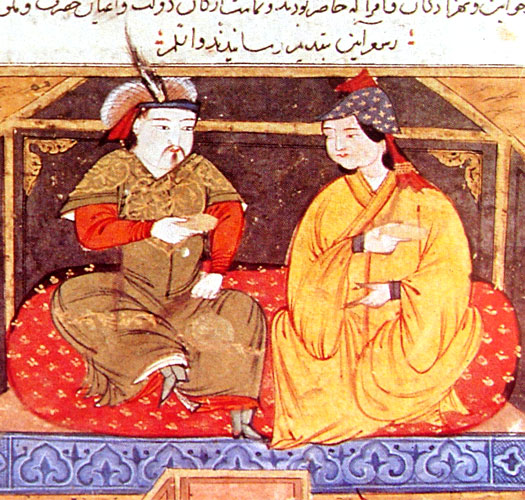 Inheriting the Persian section of the Mongol empire through his father, Tolui, Hulegu Khan led the devastating attack which ended the Islamic caliphate at Baghdad, but he also brought the eastern Persian territories under his firm control (he is seen here with his wife) Inheriting the Persian section of the Mongol empire through his father, Tolui, Hulegu Khan led the devastating attack which ended the Islamic caliphate at Baghdad, but he also brought the eastern Persian territories under his firm control (he is seen here with his wife) |
|
| Mongke decides to conquer the region as far as the Nile, so he sends a vast Il-Khan Mongol force against Baghdad in 1258. The caliph and his family are massacred when Yusuf fails to produce an army to defend them. It is said that 800,000 of Baghdad's inhabitants are killed, including the Islamic caliph - who is executed by being kicked to death. |
|
|
| 1259 - 1264 |
Shams el-Din al-Barli |
First [ Mameluke](../KingListsAfrica/EgyptIslamic.htm#Mameluke Bahris) governor of Gaza (including Palestine?). |
| 1260 |
The Mongols reach Palestine by 1260 to further their conquests. However, their advance marks the high water of Mongol expansion into the Near East, and their presence in Palestine is relatively brief, perhaps a decade or so. |
|
| 1265 |
Mameluke Sultan Baybars of [ Egypt](../KingListsAfrica/EgyptIslamic.htm#Mameluke Bahris) mobilises a large army of his highly professional troops to counter an expected thrust by the Mongols. That attack never comes so, never one to waste a good war, Baybars turns his attention to the kingdom of [Jerusalem](CanaanJerusalem.htm#Second Kingdom). However, weak as they are, the Crusaders still have their powerful line of forts and their holy military orders. Baybars deploys the full force of his Mameluke military machine in front of the fearsome castle of Arsuf, a little way to the south of Caesarea, and it takes three days of hard fighting for the castle to fall. The surviving defenders are paraded through the streets of Cairo with a cross around their necks, and the castle is demolished so that it can never again be used by the Crusaders. 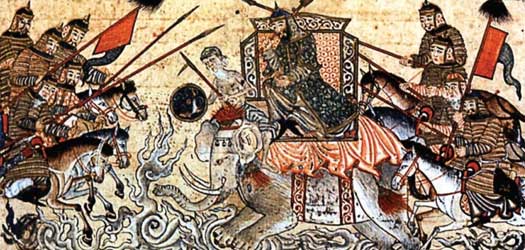 Within just thirty years, Mongol warriors had travelled as far afield as central China and Eastern Europe, and south-west into Iran, turning the Mongol empire into the largest single controlling force in history Within just thirty years, Mongol warriors had travelled as far afield as central China and Eastern Europe, and south-west into Iran, turning the Mongol empire into the largest single controlling force in history |
|
| Palestine is now formed into the Damascus wilayah (district) under the overall rule of the Mameluke sultanate of Egypt. The wilayah is divided into three smaller sanjaks (subdivisions) with capitals in Jerusalem, Gaza, and Safed. Palestine becomes a backwater under these reorganisations. Acre (ancient Akko), Jaffa, and other ports are destroyed in fear of new crusades, and maritime as well as overland commerce is interrupted. By the end of the sixteenth century the region's towns are virtually in ruins, much of Jerusalem is abandoned, and the small and still-shrinking Jewish community is poverty-stricken, much of it joining the Jewish Diaspora. The eventual [ Mameluke](../KingListsAfrica/EgyptIslamic.htm#Mameluke Bahris) decline is also darkened by political and economic upheavals, plagues, locusts, and devastating earthquakes. Only repeated - if small - waves of immigration of Jewish groups from Europe, North Africa, and Syria into Palestine saves the Jewish population from extinction. |
|
|
| 1299 - 1303 |
The Il-Khan ruler, Mahmud Ghazan, marches on Syria, taking Aleppo. He is joined there by his vassal, King Hethoum II of the kingdom of [ Lesser Armenia](AnatoliaArmeniaLesser.htm#Lesser Armenia III). Together they defeat the Mameluke Bahrids of [ Egypt](../KingListsAfrica/EgyptIslamic.htm#Mameluke Bahris) and Damascus at the Battle of Wadi al-Khazandar on 23 or 24 December. 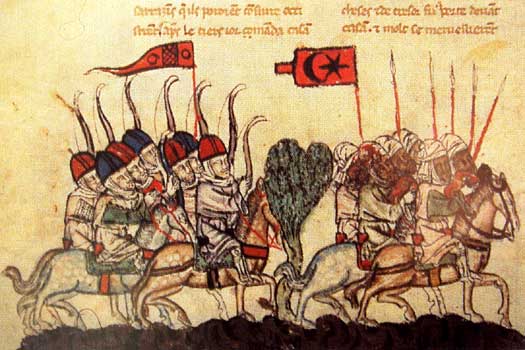 These Mamelukes aided Shajar ad Durr in seizing the Ayyubid sultanate of Egypt and establishing a Mameluke sultanate with Aybak al Turkumani These Mamelukes aided Shajar ad Durr in seizing the Ayyubid sultanate of Egypt and establishing a Mameluke sultanate with Aybak al Turkumani |
|
| The Bahrids are pushed back into Egypt, while Damascus quickly falls to the invaders. The Il-Khans then withdraw, perhaps due to a lack of supplies. Whether the Il-Khans make it as far south as Jerusalem to raid there is contested by modern scholars, largely thanks to very poor surviving records from the region in this period. The attack is renewed in 1301, but it degenerates into a scattering of inconclusive battles and politicking. In the end, Ghazan's forces are defeated by the Mamelukes of Egypt at the Battle of Marj al-Saffar in April 1303 and withdraw, never to return. |
|
|
| 1307 - 1309 |
Baybars al-Ala'i |
[ Mameluke](../KingListsAfrica/EgyptIslamic.htm#Mameluke Bahris) governor of Gaza (including Palestine?). |
| 1309 |
The imposition of a new sultan in [ Egypt](../KingListsAfrica/EgyptIslamic.htm#Mameluke Bahris) in the form of Baybars II al Jashnakir sees Baybars al-Ala'i being replaced in Gaza by a fresh face. Muhammad ibn Baktamur governs for about a year before also being replaced when the new sultan steps down in favour of a restoration of the former sultan. |
|
| 1310 - 1311 |
Muhammad ibn Baktamur |
[ Mameluke](../KingListsAfrica/EgyptIslamic.htm#Mameluke Bahris) governor of Gaza (including Palestine?). |
| 1311 - 1320 |
Sanjar al-Jawli |
[ Mameluke](../KingListsAfrica/EgyptIslamic.htm#Mameluke Bahris) governor of Gaza (including Palestine). |
| 1320 - 1329 |
Muhammad ibn Baktamur |
[ Mameluke](../KingListsAfrica/EgyptIslamic.htm#Mameluke Bahris) governor for a second time. |
| 1329 - 1332 |
Turuntay al-Jukandari |
[ Mameluke](../KingListsAfrica/EgyptIslamic.htm#Mameluke Bahris) governor of Gaza (including Palestine?). |
| 1332 - 1335 |
Taynal al-Ashrafi |
[ Mameluke](../KingListsAfrica/EgyptIslamic.htm#Mameluke Bahris) governor of Gaza. Restored to Tripoli (1335). |
| 1341 |
The death in [ Egypt](../KingListsAfrica/EgyptIslamic.htm#Mameluke Bahris) of Al-Nasir Muhammad leads to instability within the sultanate. There is a constant stream of successors over the following fifty years, with fifteen holders of the sultanate and none of them lasting more than fourteen years (and that one, Al-Ashraf Shaban II, being something of a long-lasting exception). Disorder descends on the provinces. 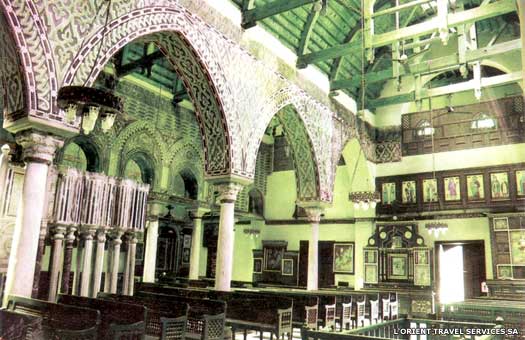 Despite having been an Islamic state since 640, Egypt was still home to some of the earliest Christian churches, such as this, the Coptic Hanging Church, which is dedicated to the Virgin Mary Despite having been an Islamic state since 640, Egypt was still home to some of the earliest Christian churches, such as this, the Coptic Hanging Church, which is dedicated to the Virgin Mary |
|
| 1342 |
Sanjar al-Jawli |
[ Mameluke](../KingListsAfrica/EgyptIslamic.htm#Mameluke Bahris) governor for a second time (3 mths). Died 1345. |
| 1349 |
The Black Death comes to [ Egypt](../KingListsAfrica/EgyptIslamic.htm#Mameluke Bahris) and Palestine, causing great loss of life and further weakening Egypt's empire. The position of the sultans becomes increasingly fragile, and it is competing Mameluke factions which begin to wield increasing power from behind the throne. |
|
| 1373 - 1375 |
Ahmad al-Hajji |
[ Mameluke](../KingListsAfrica/EgyptIslamic.htm#Mameluke Bahris) governor of Gaza (including Palestine?). |
| 1375 |
Muhammad al-Adili |
[ Mameluke](../KingListsAfrica/EgyptIslamic.htm#Mameluke Bahris) governor of Gaza (including Palestine?). |
| 1375 - 1381 |
Akbugha al-Safawi |
[ Mameluke](../KingListsAfrica/EgyptIslamic.htm#Mameluke Bahris) governor of Gaza (including Palestine?). |
| 1377 |
Al-Ashraf Shaban II, who has ruled [ Egypt](../KingListsAfrica/EgyptIslamic.htm#Mameluke Bahris) independently as an adult since 1366, is overthrown and killed. The rebellious Mamelukes who are responsible for the deed replace him with his seven year-old son. When the boy dies at the age of twelve, he is replaced by his younger brother. |
|
| 1382 |
Husam ad-Din Bakish |
[ Mameluke](../KingListsAfrica/EgyptIslamic.htm#Mameluke Bahris) governor of Gaza (including Palestine?). |
| 1382 |
Around this time Emperor Dawit I of Ethiopia raids into [ Egypt](../KingListsAfrica/EgyptIslamic.htm#Mameluke Bahris) as far as Aswan before being persuaded to return home by the Christian patriarch of Alexandria. Egypt's continuing destabilisation is only worsened by this incident, and in the same year Sultan Al-Salih Hajji II is dethroned. 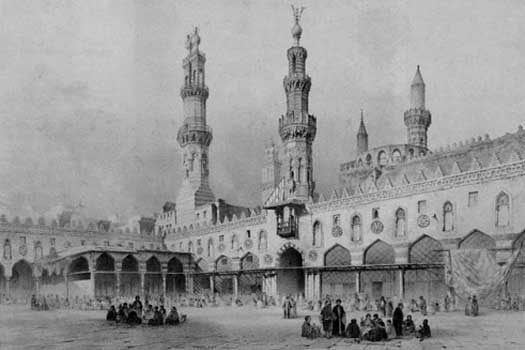 Construction of the Al-Azhar mosque in Cairo was started by the Fatamids in 970 and the completed building was dedicated in 972, as depicted in this print Construction of the Al-Azhar mosque in Cairo was started by the Fatamids in 970 and the completed building was dedicated in 972, as depicted in this print |
|
| Control of the sultanate is secured by Barquq, a Circassian general, or emir, who has been consolidating his growing power since the coup of 1377. He attempts to secure his position as sultan by placing many of his own family in positions of authority. |
|
|
| 1389 |
Two Mameluke governors rebel in [ Egypt](../KingListsAfrica/EgyptIslamic.htm#Mameluke Bahris)'s empire: Mintash, governor of Malatya, and Yalbogha al-Nasiri, governor of Aleppo. They secure Syria and march on Cairo. The usurper sultan, Barquq, attempts to escape, but he is captured and sent to al-Karak. The successful governors restore Hajji to the throne, who now assumes the reignal name of al-Mansur. |
|
| 1390 |
Sultan Hajji's position in [ Egypt](../KingListsAfrica/EgyptIslamic.htm#Mameluke Bahris) is far from stable, and when fighting develops amongst the Mameluke factions in Cairo, Barquq's supporters overcome the others and Barquq is able to return to Cairo in February 1390. The [ Burji](../KingListsAfrica/EgyptIslamic.htm#Mameluke Burjis) dynasty is born. |
|
| ? - 1398 |
Aqbugha al-Tulutumari |
[ Mameluke](../KingListsAfrica/EgyptIslamic.htm#Mameluke Burjis) governor of Gaza (including Palestine?). |
| 1412 |
The [ Mameluke](../KingListsAfrica/EgyptIslamic.htm#Mameluke Burjis) sultan, Nasir-ad-Din Faraj, is accompanied by Abbasid Caliph al Mustain Billah on his campaign against the rebellious amirs (governors) of Aleppo and Tripoli. Faraj is defeated, perhaps unexpectedly, at Lajjun on 25 April 1412 and the sultanate is plunged into a leadership crisis. 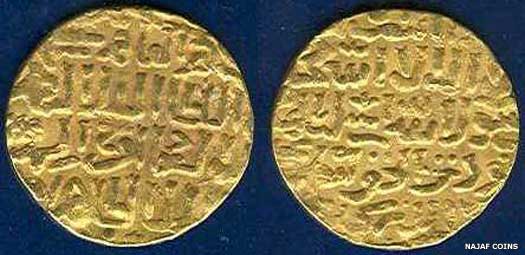 The coins pictured here are typical of those which were issued by the Mameluke Burjis in Egypt during a little over a century of rule, although their control was far from certain and extended barely beyond Egypt itself at times The coins pictured here are typical of those which were issued by the Mameluke Burjis in Egypt during a little over a century of rule, although their control was far from certain and extended barely beyond Egypt itself at times |
|
| Caliph al Mustain is captured by the rebels and, after a great deal of discussion about who should be proclaimed sultan in Faraj's place, they chose Caliph al Mustain himself. Faraj is formally deposed, and al Mustain takes his place on the understanding that he remains caliph if he is deposed as sultan. Later in the same hectic year, Nawruz al-Hafizi receives the Syrian provinces and al Mustain returns to Egypt with two prominent nobles, Shaykh al-Mahmudi and Baktamur Djillik. Shaykh immediately begins to isolate the sultan and, when Baktamur Djillik dies on 15 September, Shaykh is able to put his plans of usurpation into action. He has himself recognised as sultan on 6 November 1412, assuming the title of al-Mu'ayyad Sayf-ad-Din Tatar I. With some time for reflection, al Mustain formally abdicates and is held in the citadel until he is also deposed as caliph by Shaykh, on 9 March 1414, and replaced by his brother, al Mutadid II. |
|
|
| 1428 - 1433 |
Sayf ad-Din Inal al-Ala'i |
[ Mameluke](../KingListsAfrica/EgyptIslamic.htm#Mameluke Burjis) governor of Gaza. Sultan Inal al Alai (1453). |
| c.1436 - 1437 |
Timraz al-Mu'ayyadi |
[ Mameluke](../KingListsAfrica/EgyptIslamic.htm#Mameluke Burjis) governor of Gaza (including Palestine?). |
| 1445 - 1446 |
Yalkhuja an-Nasiri |
[ Mameluke](../KingListsAfrica/EgyptIslamic.htm#Mameluke Burjis) governor of Gaza (including Palestine?). |
| 1455 |
Abbasid puppet caliph, al Qaim, supports a [ Mameluke](../KingListsAfrica/EgyptIslamic.htm#Mameluke Burjis) mutiny against Sultan Inal, the former governor of Gaza (in 1428-1433, which includes Palestine). The mutiny is quickly put down and al Qaim is removed from office. 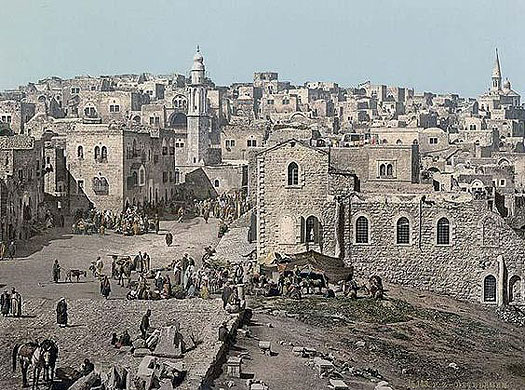 The town of Bait Lahem (Bethlehem) in Islamic-controlled Falasteen (Palestine) remained largely a backwater region during the immediate post-Crusader period The town of Bait Lahem (Bethlehem) in Islamic-controlled Falasteen (Palestine) remained largely a backwater region during the immediate post-Crusader period |
|
| c.1482 |
Sibay az-Zahiri |
[ Mameluke](../KingListsAfrica/EgyptIslamic.htm#Mameluke Burjis) governor of Gaza (including Palestine?). |
| 1482 - 1494 |
Aqbay al-Ashrafi |
[ Mameluke](../KingListsAfrica/EgyptIslamic.htm#Mameluke Burjis) governor of Gaza (including Palestine?). |
| 1492 |
The Alhambra Decree (also known as the Edict of Expulsion) sees Castile's population of Sephardi Jews being expelled from the country. The main reason is to prevent them from influencing the recent tidal wave of conversions to Christianity (involving over half the country's Jewish population since 1391). When looking for new places to settle, some of the remaining Jewish Diaspora communities return to Palestine, usually to adopt local Jewish traditions and language and to bolster the tiny population of Jews there. Others migrate (heavily) into Ottoman empire North Africa, and into France, Britain, and the [ Netherlands](../KingListsEurope/FranceHolland.htm#House of Habsburg). |
|
| 1494 - 1495 |
Qani Bak |
[ Mameluke](../KingListsAfrica/EgyptIslamic.htm#Mameluke Burjis) governor of Gaza (including Palestine?). |
| 1495 - 1496 |
Aqbay al-Ashrafi |
[ Mameluke](../KingListsAfrica/EgyptIslamic.htm#Mameluke Burjis) governor of Gaza (including Palestine?). |
| 1501 - 1517 |
Dawlat Bay |
[ Mameluke](../KingListsAfrica/EgyptIslamic.htm#Mameluke Burjis) governor of Gaza (including Palestine?). |
| 1515 - 1517 |
The Ottoman sultan begins a war against [ Egypt](../KingListsAfrica/EgyptIslamic.htm#Mameluke Burjis) which ultimately sees the latter conquered. Sultan Qansawh II al Ghawri is killed on 24 August 1516 at the Battle of Merj Dabik. 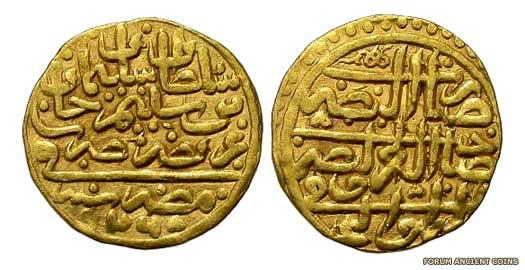 The early sixteenth century Ottoman conquest of Egypt saw an influx of Ottoman coins, with this example being issued during the reign of Suleyman I the Magnificent (1520-1566) The early sixteenth century Ottoman conquest of Egypt saw an influx of Ottoman coins, with this example being issued during the reign of Suleyman I the Magnificent (1520-1566) |
|
| Syria is immediately captured (alongside Palestine). Dhanbirdi al-Ghazali, the Mameluke viceroy of Hama, fights alongside the Ottomans and is rewarded with the governorship of Damascus (in 1518). Control of Ottoman Palestine is less clear. |
|
|
 |
|
|

 Inheriting the Persian section of the Mongol empire through his father, Tolui, Hulegu Khan led the devastating attack which ended the Islamic caliphate at Baghdad, but he also brought the eastern Persian territories under his firm control (he is seen here with his wife)
Inheriting the Persian section of the Mongol empire through his father, Tolui, Hulegu Khan led the devastating attack which ended the Islamic caliphate at Baghdad, but he also brought the eastern Persian territories under his firm control (he is seen here with his wife) Within just thirty years, Mongol warriors had travelled as far afield as central China and Eastern Europe, and south-west into Iran, turning the Mongol empire into the largest single controlling force in history
Within just thirty years, Mongol warriors had travelled as far afield as central China and Eastern Europe, and south-west into Iran, turning the Mongol empire into the largest single controlling force in history These Mamelukes aided Shajar ad Durr in seizing the Ayyubid sultanate of Egypt and establishing a Mameluke sultanate with Aybak al Turkumani
These Mamelukes aided Shajar ad Durr in seizing the Ayyubid sultanate of Egypt and establishing a Mameluke sultanate with Aybak al Turkumani Despite having been an Islamic state since 640, Egypt was still home to some of the earliest Christian churches, such as this, the Coptic Hanging Church, which is dedicated to the Virgin Mary
Despite having been an Islamic state since 640, Egypt was still home to some of the earliest Christian churches, such as this, the Coptic Hanging Church, which is dedicated to the Virgin Mary Construction of the Al-Azhar mosque in Cairo was started by the Fatamids in 970 and the completed building was dedicated in 972, as depicted in this print
Construction of the Al-Azhar mosque in Cairo was started by the Fatamids in 970 and the completed building was dedicated in 972, as depicted in this print The coins pictured here are typical of those which were issued by the Mameluke Burjis in Egypt during a little over a century of rule, although their control was far from certain and extended barely beyond Egypt itself at times
The coins pictured here are typical of those which were issued by the Mameluke Burjis in Egypt during a little over a century of rule, although their control was far from certain and extended barely beyond Egypt itself at times The town of Bait Lahem (Bethlehem) in Islamic-controlled Falasteen (Palestine) remained largely a backwater region during the immediate post-Crusader period
The town of Bait Lahem (Bethlehem) in Islamic-controlled Falasteen (Palestine) remained largely a backwater region during the immediate post-Crusader period The early sixteenth century Ottoman conquest of Egypt saw an influx of Ottoman coins, with this example being issued during the reign of Suleyman I the Magnificent (1520-1566)
The early sixteenth century Ottoman conquest of Egypt saw an influx of Ottoman coins, with this example being issued during the reign of Suleyman I the Magnificent (1520-1566)